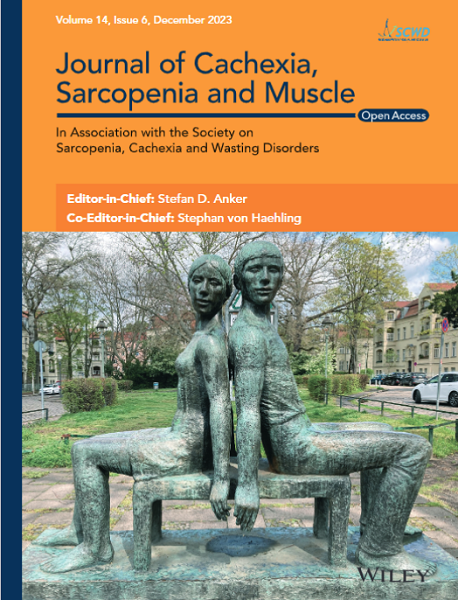The Association of Low Muscle Mass With Serum Sex Hormones and Sex Hormone-Binding Globulin
Abstract
Background
The purpose of this study was to explore the associations of low muscle mass with serum sex hormones and sex hormone-binding globulin (SHBG) using data from the National Health and Nutrition Examination Survey (NHANES).
Methods
We analysed 4403 adults aged 20–59 years from the 2013–2016 NHANES. Appendicular skeletal muscle index (ASMI) was calculated as appendicular skeletal muscle (kg) divided by height squared (m2). Low muscle mass was defined as ASMI < 7.0 kg/m2 (men) or < 5.5 kg/m2 (women). Logistic regression was performed separately for male and female participants to assess the associations of low muscle mass with serum sex hormones and sex hormone-binding globulin (SHBG).
Results
The mean age of the participants was 38.6 years (± 11.35 years), and 46.3% of the participants were female. In men, both total testosterone (TT) (Model 3: OR = 1.003, 95% CI: 1.002–1.004, p < 0.001) and free testosterone (Model 3: OR = 1.007, 95% CI: 1.001–1.013, p = 0.022) levels correlated positively with low muscle mass. The highest TT quartile had 4.529 times the odds compared to the lowest quartile (Model 3: OR = 4.529, 95% CI: 1.927–10.645, p = 0.003). Each unit increase in SHBG was associated with higher odds (Model 3: OR = 1.035, 95% CI: 1.024–1.045, p < 0.001). The highest SHBG quartile (> 45.26 nmol/L) showed 6.442-fold higher odds (Model 3: OR = 6.442, 95% CI: 3.134–13.242, p < 0.001). For women, the highest estradiol quartile (> 116 pg/mL) had 56.4% lower odds of low muscle mass than the lowest quartile (Model 3: OR = 0.436, 95% CI: 0.268–0.709, p = 0.004). Each unit increase in free testosterone (FT) showed an inverse association (Model 3: OR = 0.710, 95% CI: 0.605–0.834, p < 0.001). The highest FT quartile (> 3.70 pg/mL) had 73.7% lower odds (Model 3: OR = 0.263, 95% CI: 0.146–0.473, p < 0.001). Each unit increase in SHBG showed a positive association with low muscle mass (Model 3: OR = 1.009, 95% CI: 1.007–1.012, p < 0.001). The highest SHBG quartile (> 87.21 nmol/L) showed 5.482-fold higher odds (Model 3: OR = 5.482, 95% CI: 2.854–10.527, p < 0.001).
Conclusions
In women, estradiol and free testosterone levels are negatively associated with low muscle mass. In men, elevated total testosterone was unexpectedly associated with an increased risk of LMM. SHBG elevation is a consistent risk factor across sexes.


 求助内容:
求助内容: 应助结果提醒方式:
应助结果提醒方式:


